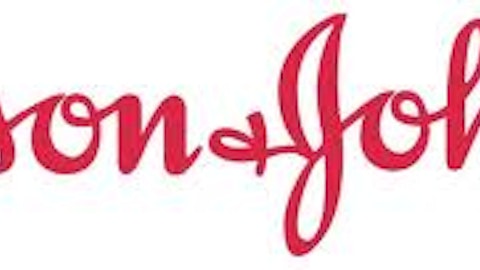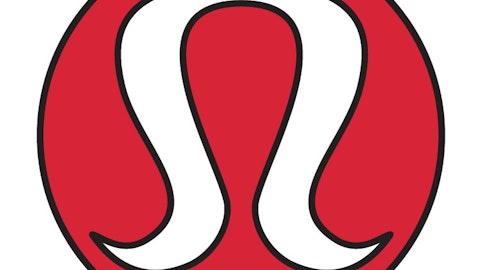I was just a kid in 1982 when Johnson & Johnson (NYSE:JNJ) was forced to recall its Tylenol capsules, but I remember it like it was yesterday. It wasn’t unusual to have boxes of the over-the-counter pain reliever on the shelves in my home back then. And then the scare happened, and those boxes quickly disappeared. But eventually, Tylenol made its way back onto the shelves and it wasn’t just a stroke of luck on the company’s part. It was a result of some extremely proactive, honest and quick behavior on the company’s part, not to mention a dose of some good PR.
That was capsules tainted with cyanide. It cost more than half a dozen people their lives. Yet somehow the company managed to right its ship and keep its management team intact. Tylenol was back in tamper-proof packaging within a matter of a couple of months. The tragedy cost the company upwards of $100 million. The late James Burke, then chief executive and chairman, kept the calm throughout what could have been the beginning of the end of the pharmaceutical giant.
Burke would remain at the helm until the end of that fateful decade. If there were a manual for how to handle corporate upheavals, Johnson & Johnson (NYSE:JNJ) could write the book. Such a manuscript would have come in handy for some other companies facing lesser obstacles and yet buckling under pressure. Let’s take a closer look at J&J and two companies now facing PR pressures – and how differently they’ve chosen to handle them.
Today’s J&J
Today Johnson & Johnson (NYSE:JNJ) is led by Alex Gorsky. He remains true to the culture perpetuated by Burke, and speaks of him in the company’s most recent annual report.
The company had $14.9 billion in cash and cash equivalents for 2012, and a debt balance of $16.2 billion.
Johnson & Johnson (NYSE:JNJ) is a healthcare bellwether that investors should use in a portfolio for stability. The company has been raising its dividend consecutively for more than half a century. In the first quarter, the company generated $17.5 billion in sales and is on track to meet its full-year EPS guidance.

Drug pipeline
J&J just acquired privately held cancer-drug company Aragon Pharmaceuticals. The deal has an estimated price tag of $1 billion, and is expected to strengthen Johnson & Johnson (NYSE:JNJ)’s cancer-drug R&D, particularly in prostate cancer.
J&J is filling up its drug pipeline as the market opportunity is ballooning. The global market opportunity in the pharmaceuticals segment is projected to grow from $963 billion in 2012 to $1.2 trillion in 2017, representing annual growth of about 4.5% each year, according to IMS data cited in J&J investor materials.
For J&J’s part, it expects to experience volume increases in emerging markets coupled with spending increases in the U.S. and Japan. The growth is being fueled by aging populations and a rising middle class in the emerging markets.
Is this stock a lemon?
The Lululemon Athletica inc. (NASDAQ:LULU) saga has been well played out. Lululemon Athletica inc. (NASDAQ:LULU) had problems with its black luon that resulted in its highest-margin product, yoga pants, being too sheer. The pants were pulled from retail shelves in a recall and were returned to the racks in 90 days. Done deal, right?
Unfortunately not. The company suffered severe backlash from the incident, and the stock price has suffered about a 25% decline from the 52-week high. As a result, chief executive Christine Day is being shown the door.
At a recent William Blair conference, Day likened Lululemon and her situation to Burberry, where the company’s former chief executive, Rose Marie Bravo, left in haste in 2006. Why wouldn’t Day grab onto the culture at J&J — which retained its top executive — instead of relying on Burberry as the benchmark? Clearly, the athletic apparel company has more in common with the Burberry brand, but doesn’t corporate crisis transcend industry? If J&J’s handling of a corporate crisis was the standard, perhaps Day wouldn’t be packing up her desk.
In addition to Day’s spot, there were other management defections in logistics and design after the luon fiasco. There is growth on the horizon but I would wait until there is more certainty about the company’s leadership before investing.
Performance
Lululemon’s sales per square foot reached $2,058 in 2012 and its top- and bottom-line results have been rising for five years. The company is implementing a five-year plan and has a 10-year vision. Part of this initiative involves a push into the men’s market, where the company’s penetration is growing. By 2016 Lululemon should launch its maiden standalone men’s store. The company also created a new mobile app to propel its e-commerce ambitions.
Face of the company
Over at The Men’s Wearhouse, Inc. (NYSE:MW), the board of directors terminated founder and chairman George Zimmer. The future is uncertain and uncertainty is generally not good for a stock.
The company postponed its shareholder meeting so that Zimmer wouldn’t be able to participate in the re-nomination of board members, according to the company’s statement.
Zimmer issued a response that was published on CNBC stating that in recent months, he had expressed concerns to the board about the direction in which the company was heading. Reports suggest Zimmer was opposed to the attempts to unload the company’s under-performing K&G brand, a segment that has been weighing on same-store sales performance. The board’s response was to fire him.
Over four decades, Zimmer is not only a key executive but he has become the face of the company.
“.. the extended loss of the services of Mr. Zimmer or other key personnel could have a material adverse effect on the securities markets’ view of our prospects and materially harm our business.” – The Men’s Wearhouse 2012 10K
The stock pulled back about 2% in response to the management shakeup. There could be further investor backlash, and I would sit out of this stock for now.
According to Stifel Nicolaus analyst Richard Jaffe, the board might be looking to also replace Zimmer as spokesman in an attempt to appeal to a younger demographic. Incidentally, the company has been spending more on advertising, which contributed to a near 6% increase in its SG&A expenses in the first quarter.
Performance
As a specialty retailer, Men’s is especially vulnerable to the economy, including consumer spending and consumer sentiment, and those economic headwinds continue to blow.
Nonetheless, the company’s top- and bottom-line results increased in the first quarter, and strong tuxedo sales (due to a shift in prom season timing) led to higher gross margins in the retail and corporate segments. The company has a $200 million share-buyback program in place and has access to up to $450 million in a credit facility.
Bottom line
J&J was thrust into a situation it didn’t create and it responded with strength and accountability. Good PR matters, and it can make all the difference in the way that a brand is perceived for years to come, as J&J proved several decades ago. Maybe more companies should hire Burson-Marstellar, the PR firm that guided J&J through its dark days in the eighties.
Lululemon and Men’s Wearhouse are losing the PR battle. But Lululemon has growth on the horizon, and I would consider the stock once its management team is secure. As for Men’s Wearhouse, there’s lingering animosity tied to that situation plus economic headwinds. I would stay away for now.
Involved in everything from baby powder to biotech, Johnson & Johnson (NYSE:JNJ)’s critics are convinced that the company is spread way too thin. If you want to know if J&J is nothing but a bloated corporate whale — or a well-diversified giant that’s perfect for your portfolio — check out The Fool’s new premium report outlining the Johnson & Johnson story in terms that any investor can understand. Claim your copy by clicking here now.
Gerelyn Terzo has no position in any stocks mentioned. The Motley Fool recommends Johnson & Johnson and Lululemon Athletica. The Motley Fool owns shares of Johnson & Johnson. Try any of our Foolish newsletter services free for 30 days. We Fools may not all hold the same opinions, but we all believe that considering a diverse range of insights makes us better investors. The Motley Fool has a disclosure policy. Is this post wrong? Click here. Think you can do better? Join us and write your own!
The article If Only Johnson & Johnson Could Bottle This and Sell It originally appeared on Fool.com and is written by Gerelyn Terzo.
Gerelyn is a member of The Motley Fool Blog Network — entries represent the personal opinion of the blogger and are not formally edited.
Copyright © 1995 – 2013 The Motley Fool, LLC. All rights reserved. The Motley Fool has a disclosure policy.





